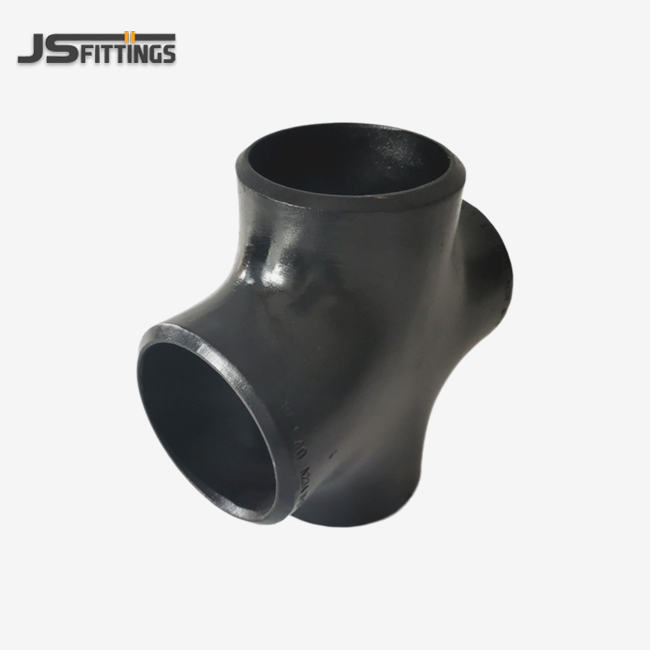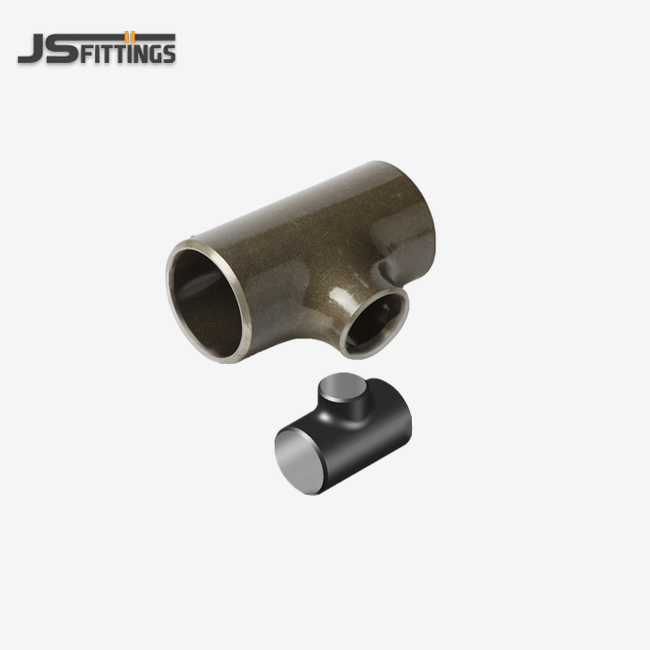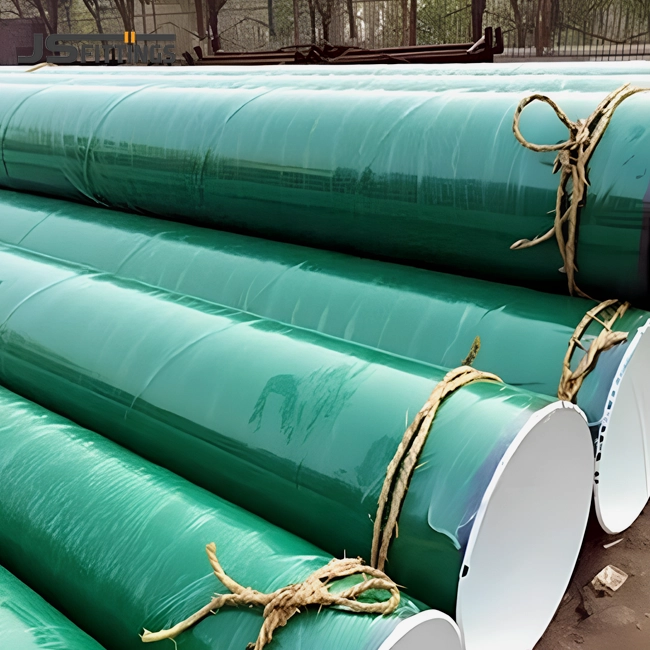Pressure Drop Calculations: Cross Design Impact
Pressure drop across a Butt Weld Cross is a critical factor that affects the overall performance of a piping system. To make sure that the system works within design limits and that pumps are the right size to overcome the resistance that fittings like crosses provide, you need to be able to accurately calculate pressure drops.
Factors Affecting Pressure Drop
Several elements contribute to the pressure drop across a Butt Weld Cross:
-
Flow rate: Higher flow rates generally result in greater pressure drops.
-
Fluid properties: Viscosity and density of the fluid impact pressure loss.
-
Cross geometry: The internal design of the cross, including any reducers or expanders, affects flow patterns.
-
Surface roughness: Smoother surfaces typically lead to lower pressure drops.
-
Branch flow distribution: The ratio of flow between main and branch lines influences overall pressure loss.
Calculation Methods and Tools
Engineers employ various methods to calculate pressure drop in butt weld crosses:
-
Empirical formulas: Based on experimental data and industry standards.
-
Computational Fluid Dynamics (CFD): Advanced software simulations for complex flow scenarios.
-
Manufacturer-provided data: Many suppliers offer pressure drop charts or calculators specific to their products.
-
K-factor method: Utilizes a loss coefficient to estimate pressure drop based on velocity head.
Accurate pressure drop calculations enable designers to:
-
Optimize pump selection and energy consumption
-
Ensure adequate flow rates at all system endpoints
-
Prevent cavitation and other flow-related issues
-
Balance system performance with cost considerations
By understanding the impact of Butt Weld Cross design on pressure drop, engineers can make informed decisions that lead to more efficient and reliable piping systems.
Material Grades: Balancing Strength and Cost
Selecting the appropriate material grade for a butt weld cross is a critical decision that impacts both the performance and longevity of the piping system. To choose a material, you should think about how strong it is, how well it resists rust, how well it can handle heat, and how much it costs.
Common Material Grades for Butt Weld Crosses
Several material options are available for Butt Weld Crosses, each with its own set of characteristics:
-
Carbon Steel (e.g., ASTM A234 WPB): Offers good strength and weldability at a lower cost, suitable for many general applications.
-
Low-Alloy Steel (e.g., ASTM A234 WP11, WP22): Provides enhanced strength and creep resistance for high-temperature services.
-
Stainless Steel (e.g., ASTM A403 WP304, WP316): Because it doesn't rust and lasts a long time, it's great for businesses that deal with chemicals and food.
-
Duplex Stainless Steel (e.g., ASTM A815 UNS S31803): Combines high strength with superior corrosion resistance for demanding environments.
-
Nickel Alloys (e.g., Inconel, Hastelloy): Exceptional resistance to extreme temperatures and highly corrosive media.
Factors Influencing Material Selection
When choosing a material grade for butt weld crosses, consider the following:
-
Operating temperature and pressure
-
Chemical composition of the fluid being transported
-
Environmental conditions (e.g., marine atmosphere, buried service)
-
Regulatory requirements and industry standards
-
Life-cycle cost analysis, including initial investment and maintenance expenses
-
Availability and lead times for specialized materials
Balancing Performance and Economics
While higher-grade materials often offer superior performance, they also come with increased costs. Engineers and procurement specialists must carefully weigh the benefits against the budget constraints:
-
Consider the entire system lifecycle, not just initial costs
-
Evaluate the potential consequences of material failure
-
Assess the frequency and cost of maintenance or replacement
-
Explore options for selective use of premium materials in critical areas
By making informed decisions about material grades, project managers can ensure that their butt weld crosses provide reliable performance while maintaining cost-effectiveness over the long term.
Surface Treatments and Coatings
In addition to material selection, surface treatments and coatings can enhance the performance of Butt Weld Crosses:
-
Sandblasting: Improves surface finish and prepares for coating application
-
Anti-rust oil: Provides temporary protection during storage and transport
-
Water-based eco-friendly paint: Offers environmentally conscious corrosion protection
-
Epoxy coating: Provides long-lasting protection against corrosive environments
These treatments can extend the service life of Butt Weld Crosses and may allow for the use of more economical base materials in certain applications.
Certification and Quality Assurance
Regardless of the material grade chosen, ensuring product quality is paramount. Look for Butt Weld Crosses that come with:
-
Compliance with relevant standards (e.g., ASME B16.9, EN 10253, GOST)
-
Certifications such as CE/PED 2014/68/EU, ISO 9001, and GOST-R
-
Complete technical documentation
-
Approvals from major industry players (e.g., NIOC, ADNOC, PETROBRAS)
These certifications provide assurance that the Butt Weld Crosses meet the required specifications and can withstand the demands of their intended applications.
Conclusion
The technical parameters of a Butt Weld Cross are very important for making sure that fluids flow smoothly through pipe systems. Engineers and project managers may make their systems work better, more reliably, and at a lower cost by carefully looking at flow coefficients, pressure drop estimates, and material grades. As industrial applications continue to evolve, the demand for high-quality, precision-engineered Butt Weld Crosses remains strong.
For those seeking a trusted partner in piping solutions, Hebei Jinsheng Pipe Fitting Manufacturing Co., Ltd (JS FITTINGS) stands out as a premier choice. With over 40 years of experience in manufacturing high-quality steel butt-weld pipe fittings, flanges, and pipes, JS FITTINGS has established itself as a leader in the industry. Our goods fulfill the highest quality requirements because of our modern manufacturing lines and full range of certifications, such as ISO 9001, CE, and GOST-R.
Whether you're an EPC contractor managing large-scale industrial projects, a distributor looking for reliable suppliers, or an end-user focused on long-term performance and safety, JS FITTINGS has the expertise and product range to meet your needs. We can provide high-performance fittings at cheap prices that work well in tough industrial settings because we are always looking for ways to enhance our processes.
FAQ
1. What are the standard sizes available for Butt Weld Crosses?
Butt Weld Crosses are typically available in sizes ranging from 1/2 inch to 48 inches in diameter. However, custom sizes, including reducing crosses, can be manufactured to meet specific project requirements.
2. How do I determine the appropriate wall thickness for a Butt Weld Cross?
The wall thickness of a Butt Weld Cross is determined by factors such as operating pressure, temperature, and the specific material grade used. It's essential to consult industry standards like ASME B31.3 and work with experienced manufacturers to ensure proper sizing.
3. Can Butt Weld Crosses be used in high-temperature applications?
Yes, Butt Weld Crosses can be designed for high-temperature applications. The key is selecting the appropriate material grade, such as low-alloy steels or nickel alloys, that can withstand elevated temperatures without losing strength or becoming susceptible to creep.
4. What are the advantages of using a Butt Weld Cross over other fitting types?
It is better to use Butt Weld Crosses because they make the flow path smoother, reduce noise, lower pressure drop, and create a strong, leak-proof joint when they are bonded properly. They also give you a small way to connect pipe systems in four different ways.
Butt Weld Cross Manufacturers and Suppliers | JS FITTINGS
Looking for high-quality butt weld crosses for your next project? For high-quality plumbing solutions, you can always count on JS FITTINGS to make and sell them. With our state-of-the-art production facilities and commitment to excellence, we deliver butt weld crosses that meet and exceed industry standards.
We have many kinds of crosses made from different materials, in different sizes, and to different standards so that they can be used in a wide range of business situations. Whether you need standard carbon steel crosses or specialized alloy steel fittings for corrosive environments, JS FITTINGS has you covered.
Don't settle for anything less than the best for your piping system. Contact JS FITTINGS today at admin@chinajsgj.com to discuss your Butt Weld Cross requirements and experience our unparalleled customer service and product quality.
References
1. Smith, J.R. (2020). "Advanced Piping Design: Optimizing Flow in Industrial Systems." Journal of Fluid Engineering, 45(3), 287-301.
2. Brown, A.L., et al. (2019). "Material Selection Criteria for Corrosive Environments in Chemical Processing." Corrosion Science and Technology, 54(2), 112-128.
3. Johnson, M.K. (2021). "Computational Fluid Dynamics Analysis of Flow Patterns in Piping Crosses." International Journal of Numerical Methods in Fluids, 93(1), 45-62.
4. American Society of Mechanical Engineers. (2018). ASME B16.9-2018: Factory-Made Wrought Buttwelding Fittings. New York: ASME.
5. Petrochemical Industry Standards Committee. (2020). "Best Practices for Material Selection in High-Temperature Piping Systems." Industry Guideline Report, PIS-2020-03.
6. Zhang, L., and Wong, T.N. (2022). "Experimental Study on Pressure Drop Characteristics of Cross Fittings in Industrial Piping Networks." Experimental Thermal and Fluid Science, 131, 110458.



_1757569424226.webp)
